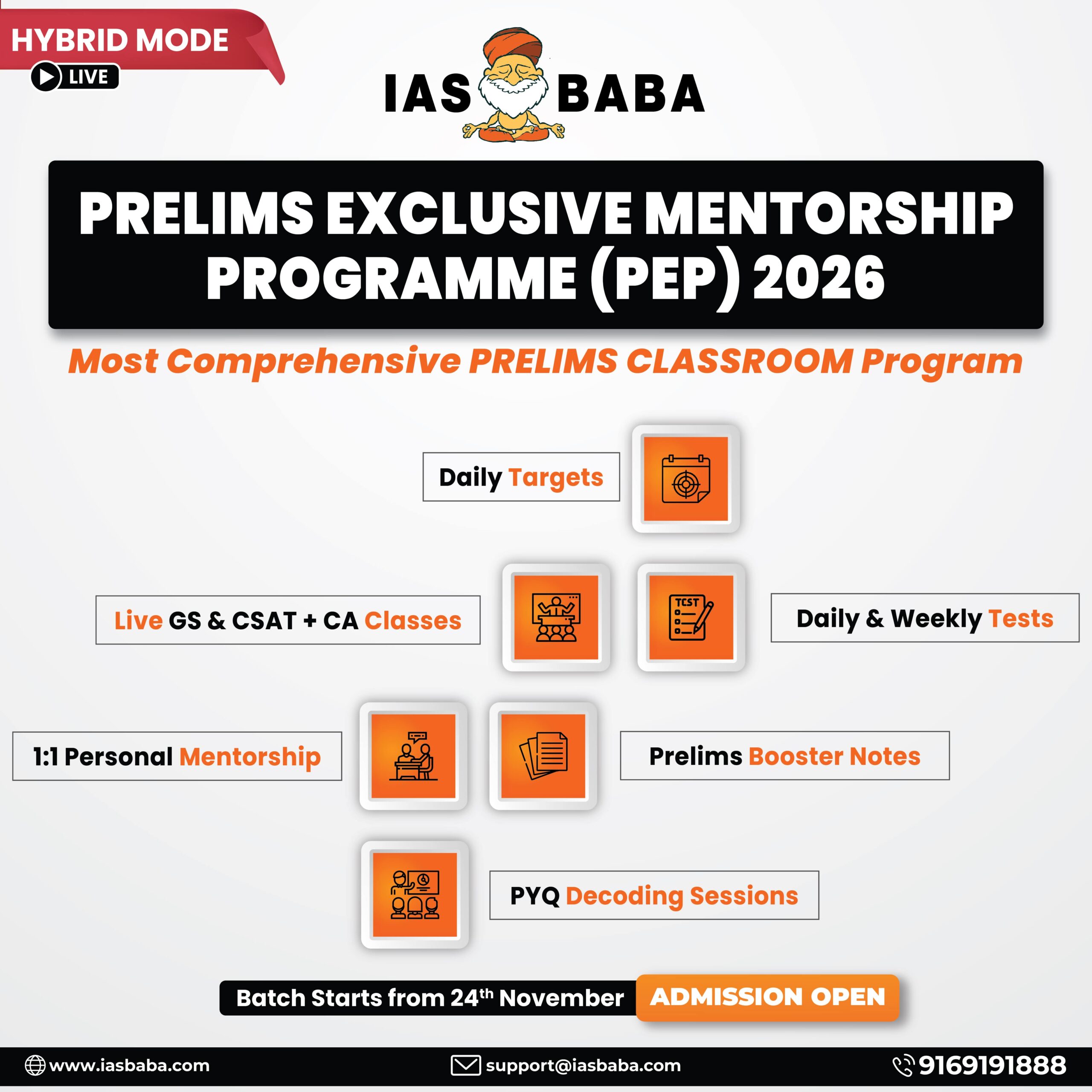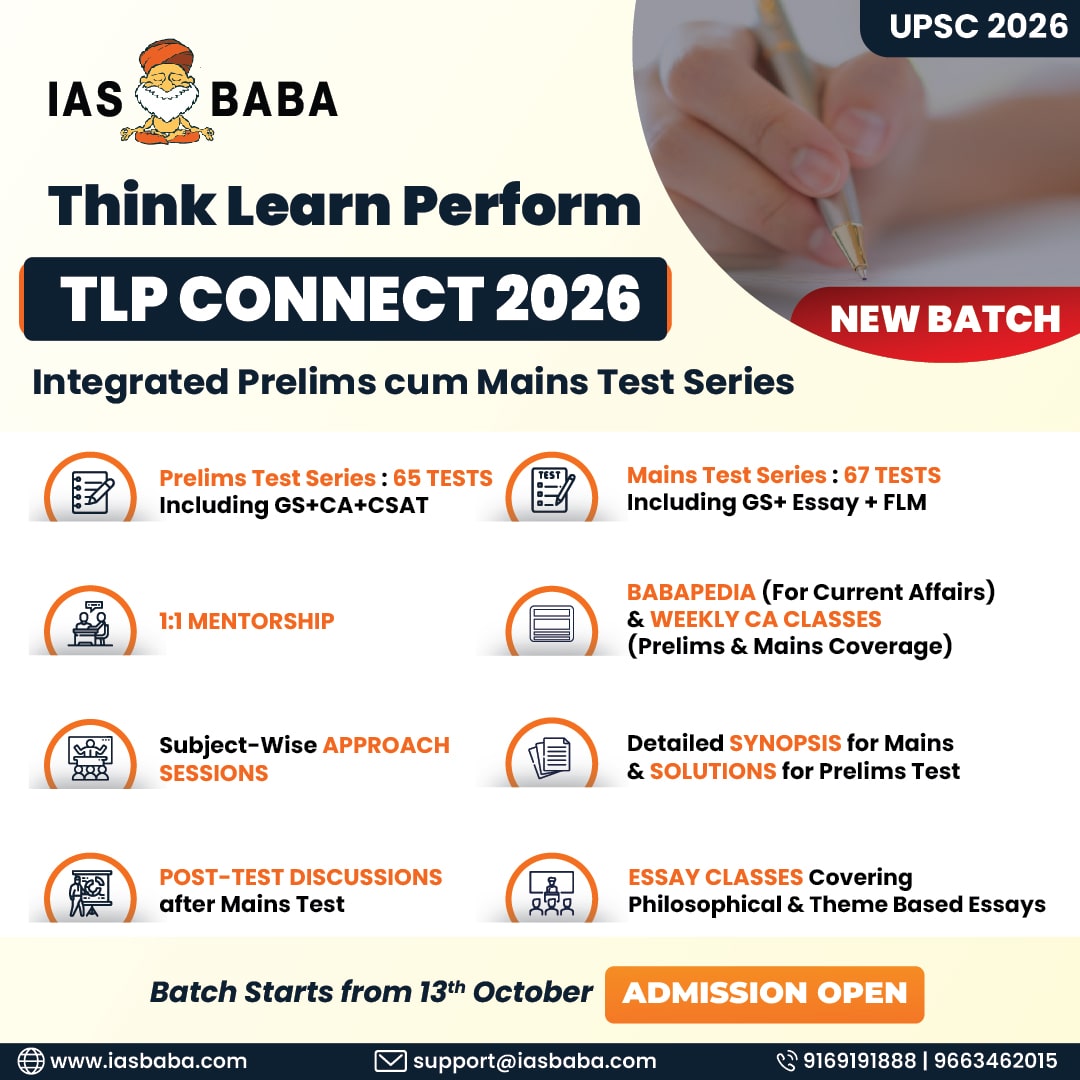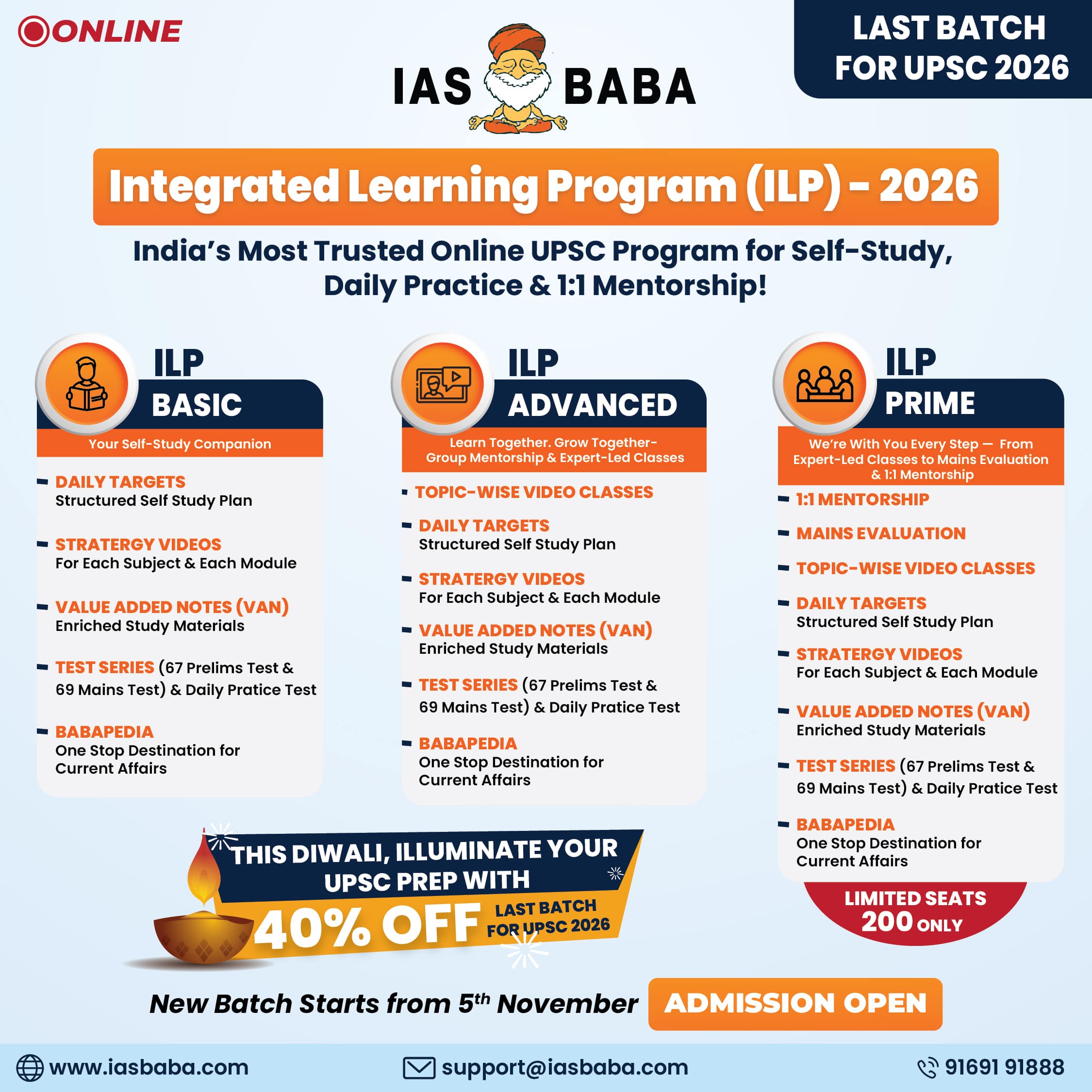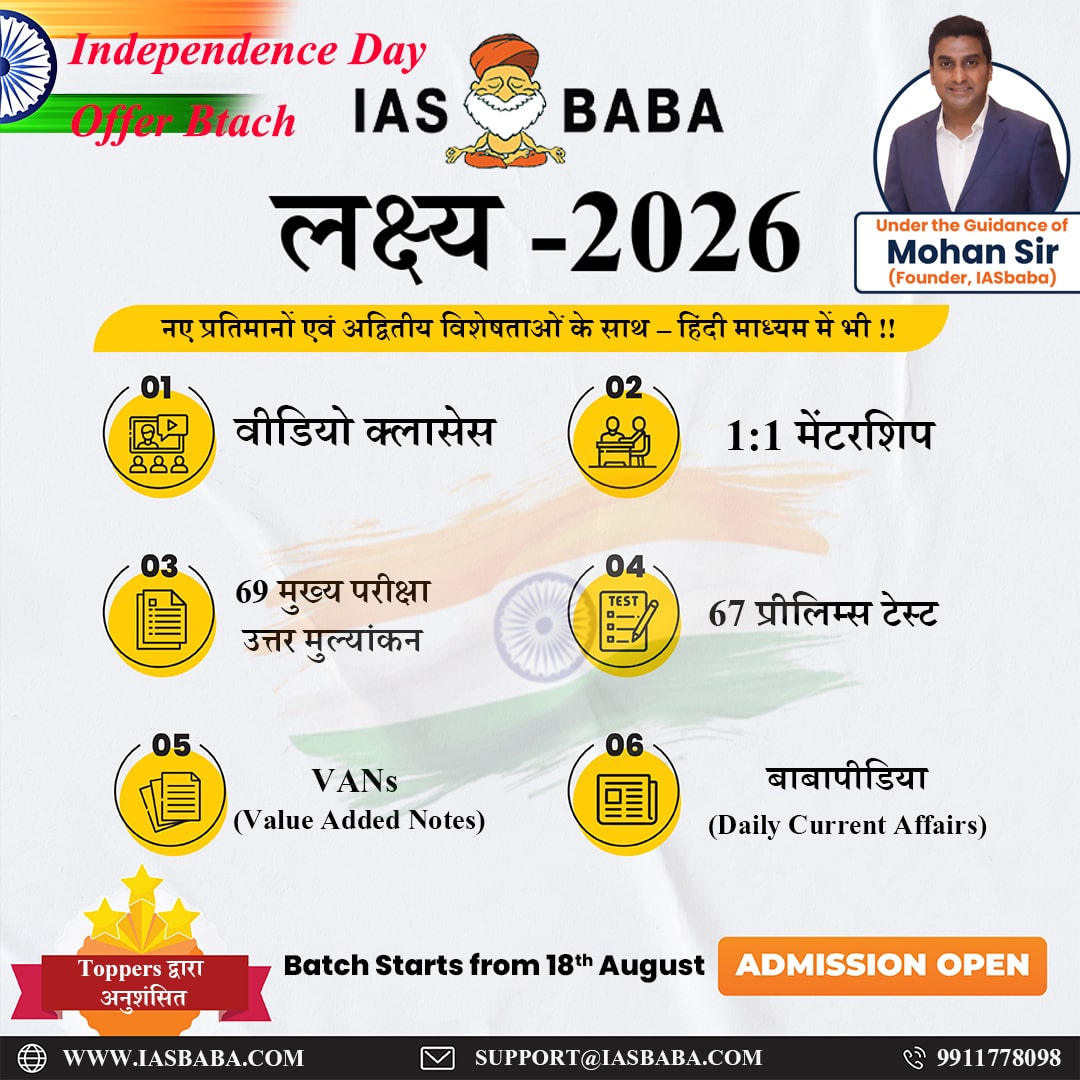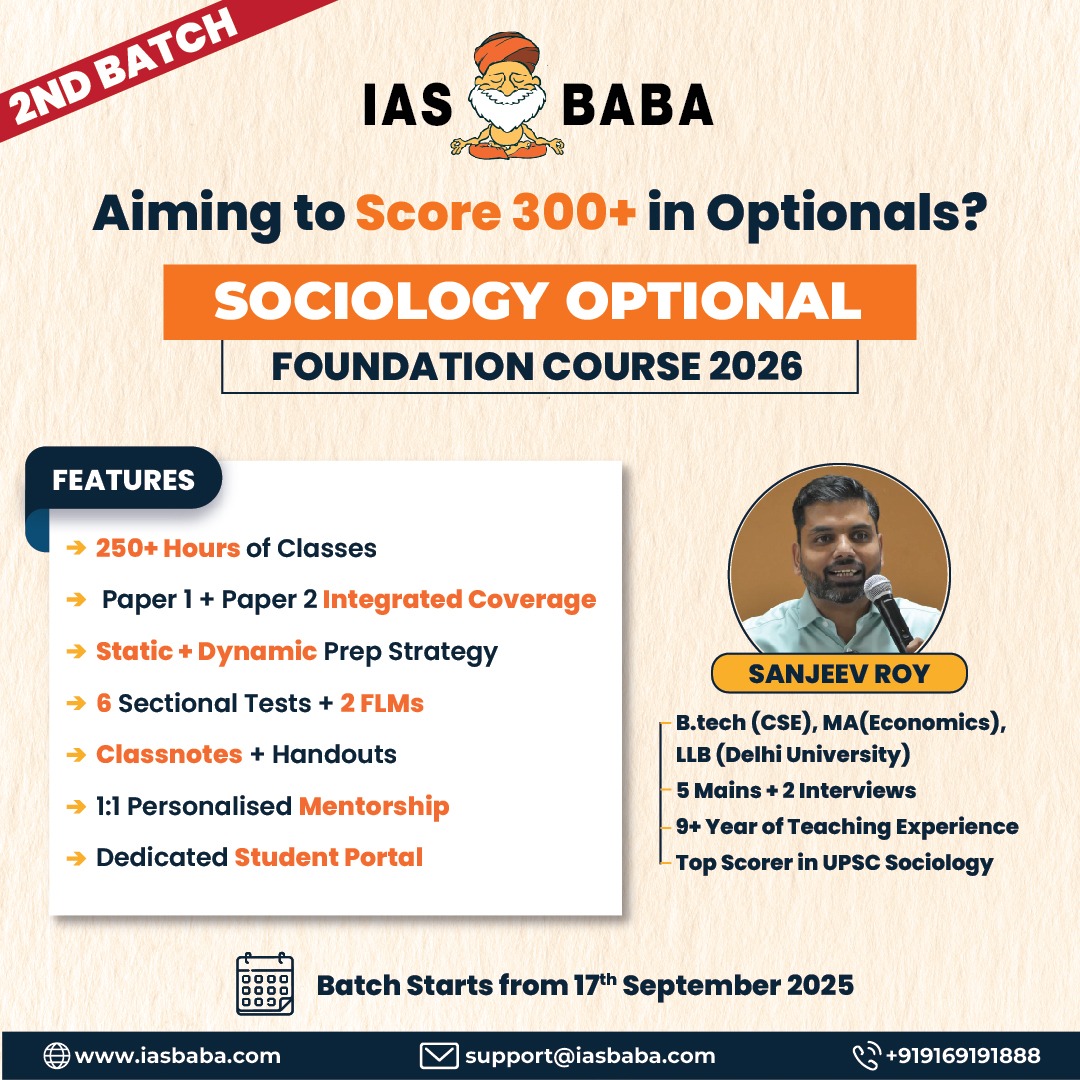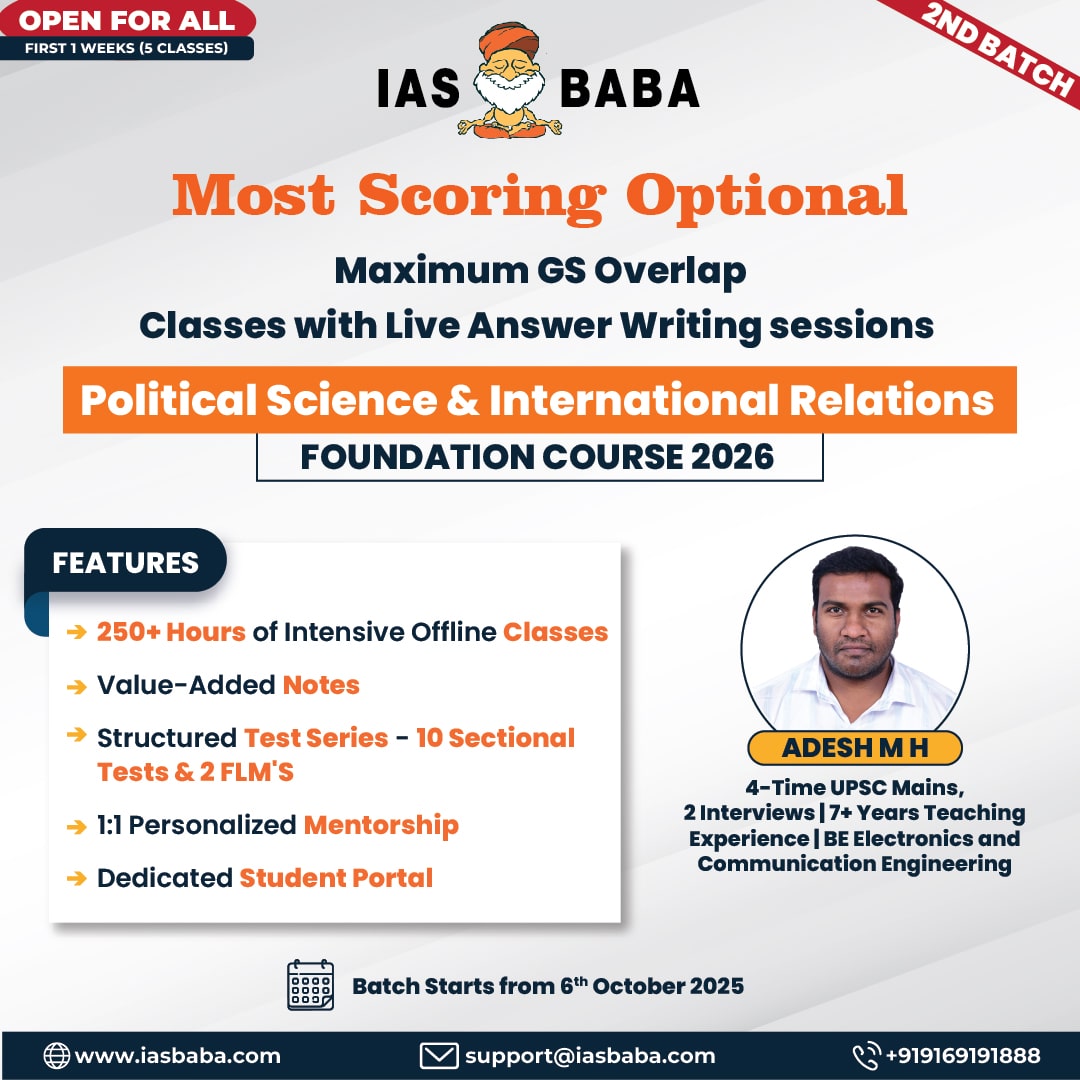IASbaba's Daily Current Affairs Analysis
Archives
(PRELIMS & MAINS Focus)
Syllabus:
- Prelims & Mains – ECONOMY
Context: Punjab Mining Minister Barinder Kumar Goyal said the government will explore potash mining in Fazilka and Sri Muktsar Sahib districts, where surveys previously detected large mineral reserves in three mining blocks.
Background: –
- Surveys of the Geological Survey of India (GSI) have also identified reserves in parts of Rajasthan. These findings highlight the potential for potash mining in both states, reducing India’s dependence on imports and bolstering the domestic fertilizer industry.
Key takeaways
- Potash refers to potassium-bearing minerals that are primarily used in fertilisers. Over 90% of potash is used as fertilizer and it is one of the three primary agricultural nutrients (Nitrogen, Phosphorus and Potassium or N-P-K).
- While all potash fertilizers contain potassium there are a number of different forms in which it exists. Among these forms is Sulphate of Potash (SOP), a premium potash fertilizer that is free of chloride (a compound considered harmful to plants). On the other hand, Muriate of Potash or MOP contains some chloride.
- While SOP is used primarily on high-value crops, usually leafy plants, fruits and vegetables, MOP is commonly used on carbohydrate-type crops, such as wheat.
Where were potash reserves found?
- Punjab is now the second state after Rajasthan to have significant potash reserves. In Rajasthan, potash deposits were mainly found in the northwestern Nagaur-Ganganagar basin.
- According to the National Mineral Inventory (NMI) database, the total potash resources are estimated at 23,091 million tonnes in 2020. Rajasthan alone contributes 89% to the total resources.
- However, despite having substantial reserves, exploration and extraction have been delayed. So far, India has not engaged in potash mining.
- As of now, the country is completely dependent on imports.
Source: Indian Express
Syllabus:
- Prelims & Mains – CURRENT EVENT
Context: A US military aircraft carrying 104 deported Indian nationals landed at Amritsar airport on 5th February 2025. According to the deportees, they spent between Rs 30 lakh and Rs 1 crore in expenses and agent fees in their efforts to reach the US, mostly through what is known as the “dunki route”.
Background: –
- The Trump administration has identified about 20,000 Indian illegal immigrants as part of its mass deportation plan. Indians comprise about 725,000 illegal migrants — the biggest group outside of Central and Latin America.
Key takeaways
- “Dunki” or “donkey journey” refers to the long-winding, often dangerous routes that people across the world take to reach the places they want to immigrate to. These difficult journeys are undertaken due to a lack of requisite legal permits or financial resources. The American authorities have deported those who have taken this illegal route to reach America.
- Deportation is the process of removing a non-citizen for violating immigration law.
- According to the US Immigration and Customs Enforcement’s Fiscal Year 2024 Annual Report, Honduras, Mexico, Guatemala, and El Salvador remain top countries where citizens are deported or repatriated from the US. However, India figures above China and almost equals Brazil.
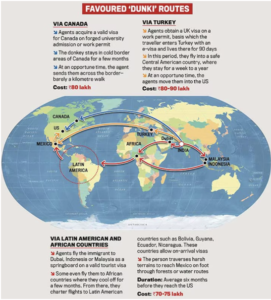
India Government’s reaction
- After the deportation of the illegal migrants from the USA, the Indian government said that it is considering enacting a new law, tentatively titled ‘Overseas Mobility (Facilitation and Welfare) Bill, 2024’, to establish an enabling framework which will promote “safe, orderly and regular migration for overseas employment”.
- There is a pressing need for comprehensive legislative overhaul to replace the outdated provisions of the Emigration Act 1983.
- The ministry said that Indian missions/consulates spread awareness amongst emigrants and issued advisories for prospective emigrants. These awareness activities such as advisories equip emigrants with information on safe migration practices, registered recruiting agents, valid foreign jobs, and ways to avoid fraudulent recruiting agencies.
Source: Indian Express
Syllabus:
- Prelims & Mains – POLITY
Context: The Supreme Court questioned Tamil Nadu Governor R N Ravi’s decision to withhold assent to some Bills presented to him by state legislature and said “he seems to have adopted his own procedure”.
Background:
- On November 13, 2023, the Governor R.N. Ravi had declared that he was withholding assent on 10 bills passed by the Tamil Nadu state assembly. Subsequently, the assembly convened a special session on November 18, 2023, and re-enacted the same bills.
- This time, the governor had to proceed to refer all 10 bills to the President for consideration; the President had assented to one Bill, rejected seven and did not consider two proposed laws. The state government argued that the governor’s conduct was that of a political opponent.
Key takeaways
- While Article 163 of the Constitution deals with the powers of the Governor generally, Article 200 specifically deals with the issue of granting assent to Bills. Both the provisions are read together to determine the contours of the power the Governor holds on this issue.
- When a Bill passed by the legislature of a state is presented to the Governor, the Governor has four options: (1) grant assent to the Bill; (2) withhold assent to the Bills; (3) return the Bills for reconsideration; or (4) reserve the Bill for the consideration of the President.
- Article 200 reads: When a Bill has been passed by the Legislative Assembly of a State or, in the case of a State having a Legislative Council, has been passed by both Houses of the Legislature of the State, it shall be presented to the Governor and the Governor shall declare either that he assents to the Bill or that he withholds assent therefrom or that he reserves the Bill for the consideration of the President.
- However, the Article has a key proviso. It says that the Governor “may, as soon as possible” return Bills other than money Bills, with a message requesting that the House reconsider it in parts or in whole. However, once the Legislative House reconsiders the Bill and sends it to the Governor once again, the Governor “shall not withhold assent therefrom”.
- An indefinite timeline in deciding on Bills can paralyse the elected government. At the same time, giving assent to Bills is one of the few areas in which the Governor can exercise his discretion. But again, this discretion cannot be used arbitrarily or based on a personal preference, but only in Constitutional terms with cogent reasons.
- Additionally, Article 200 uses the word “shall” which indicates that the framers of the Constitution intended a mandatory tone for the Governor on this aspect. The Supreme Court in its landmark 2016 ruling in the Arunachal Pradesh Assembly case (Nabam Rebia and Bamang Felix vs Deputy Speaker) discussed this aspect briefly.
Source: Indian Express
Syllabus:
- Prelims & Mains – POLITY
Context: Odisha demanded an increase in states’ share of central taxes to 50 per cent from the existing 41 per cent. Odisha, which has sought Rs 12.59 lakh crore in central taxes for the period 2026-31, joins states such as Gujarat and Tamil Nadu in making the demand.
Background: –
- CM Mohan Charan Majhi, along with senior officers, met the finance commission headed by Arvind Panagariya to seek an increase in its share in central taxes. It also demanded inclusion of cess and surcharge in divisible pool so states can have their share in it.
Key takeaways
- The Finance Commission (FC) is a constitutional body set up under Article 280 of the Constitution to make recommendations on the distribution of resources between the Union and the states.
- The First FC was constituted in 1951 and its recommendations covered the five-year period 1952-57. Since then, we have had 15 FCs.
- Currently the 16th Finance Commission is in office which was constituted in December 2023. The Commission is required to submit its report by October 31, 2025 and would make recommendations for the five-year period starting April 1, 2026.
- The FC addresses the vertical imbalance arising out of asymmetric assignment of revenues and expenditure between the Union and the states in the Constitution by recommending sharing a proportion of all taxes collected by the Union government with the states (also called devolution).
- The 13th FC recommended sharing 32% of the divisible pool of resources with the states. The14th FC increased this proportion to 42% while the 15th FC recommended sharing 41% with the states.
- A number of criteria (with weights) is used for distribution of the shareable tax revenue among states. These are classified under four heads: need (population, area, demographic change), equity (income distance), efficiency/ performance (tax-effort, fiscal discipline, demographic performance), and fiscal disability (forest cover).
- The 15th FC used 2011 population (with 15% weight), area (15%), forest and ecology (10%), income distance (45%), tax and fiscal efforts (2.5%) and demographic performance (12.5%) for determining inter se shares of states. FCs also recommend grants to states. However, devolution is the dominant component, accounting for 80-85% of total FC transfers.
Source: Indian Express
Syllabus:
- Prelims – SCIENCE & TECHNOLOGY
Context: NTPC announced the launch of CO2 battery energy storage technology – a pioneering step towards sustainable and innovative energy solutions. This cutting-edge project is spearheaded by NETRA, the R&D wing of NTPC, in collaboration with M/s Triveni Turbine Limited and M/s Energy Dome, Italy.
Background: –
- A CO2 Battery with an energy capacity of 160 MWh will be set up at NTPC Kudgi. This initiative is a part of NTPC’s broader strategy to diversify its energy portfolio and enhance renewable power generation.
Key takeaways
- A CO₂ battery is an innovative energy storage system that utilizes carbon dioxide (CO₂) to store and release electrical energy, offering an alternative to traditional lithium-ion batteries. This technology is particularly suited for long-duration energy storage, addressing the intermittency of renewable energy sources like wind and solar.
- Unlike Battery Energy Storage Systems (BESS), which operate on electrochemistry, the CO2 Battery is based on specialized electro-mechanical turbomachinery. It functions on a ‘Closed Brayton Thermodynamic Cycle’ using anhydrous CO2 as the process fluid. The charging and discharging of electricity occur by manipulating the physical parameters of CO2 from vapor to liquid state and vice versa.
- How CO₂ Batteries Work:
- Energy Storage (Charging):
- CO₂ gas is compressed, which heats it to approximately 400°C.
- The heated CO₂ is then cooled through a heat exchanger, allowing it to liquefy.
- The liquid CO₂ is stored under pressure in specialized containers.
- Energy Release (Discharging):
- When electricity is needed, the stored liquid CO₂ is evaporated and passed through the heat exchanger, where it absorbs heat and reverts to a gaseous state.
- The expanding CO₂ gas drives a turbine, generating electricity.
- CO₂ is re-captured and reused, creating a closed-loop system.
- This closed-loop system efficiently stores energy and can release it over extended periods, making it ideal for balancing supply and demand in power grids.
- Energy Storage (Charging):
- Advantages of CO₂ Batteries:
- Cost-Effectiveness: Utilizing readily available CO₂ and standard industrial components reduces costs compared to lithium-ion batteries.
- Scalability: The modular design allows for easy scaling to meet various energy storage needs.
- Environmental Benefits: By using CO₂ in a closed-loop system, these batteries minimize greenhouse gas emissions and offer a sustainable energy storage solution.
- No requirement for critical minerals like lithium and cobalt.
Source: PIB
Practice MCQs
Q1.) Which of the following correctly describes the sequence of steps in the working of a CO₂ battery?
- CO₂ gas is compressed, which increases its temperature.
- The hot CO₂ is then cooled in a heat exchanger, causing it to liquefy and be stored under pressure.
- When energy is required, the stored liquid CO₂ is evaporated, expands, and drives a turbine to generate electricity.
Which option is correct?
(a) 1 and 2 only
(b) 2 and 3 only
(c) 1 and 3 only
(d) 1, 2, and 3
Q2.) Regarding Article 200 of the Indian Constitution, which of the following statements is correct?
- When a bill (other than a money bill) is returned by the Governor for reconsideration with a message, and the Legislature passes it again, the Governor is bound to give his assent.
- The Governor may withhold assent indefinitely if he does not find the bill personally acceptable.
- The Governor has the option to either grant assent, withhold assent, return the bill for reconsideration, or reserve the bill for the President’s consideration.
Select the correct answer:
(a) 1 and 2 only
(b) 1 and 3 only
(c) 2 and 3 only
(d) 1, 2 and 3
Q3.) Consider the following statements regarding the devolution of central taxes in India through the Finance Commission:
- The Finance Commission (FC) is a constitutional body that recommends the sharing of a portion of central taxes with the states, addressing vertical imbalances.
- The 15th Finance Commission recommended a 41% share of the divisible pool for the states.
- Several states are demanding an increase in their share from the current level (41%) to 50%.
Select the correct answer:
(a) 1 and 2 only
(b) 1 and 3 only
(c) 1, 2 and 3
(d) 2 and 3 only
Comment the answers to the above questions in the comment section below!!
ANSWERS FOR ’ Today’s – Daily Practice MCQs’ will be updated along with tomorrow’s Daily Current Affairs
ANSWERS FOR 7th February – Daily Practice MCQs
Q.1) – b
Q.2) – a
Q.3) – b



